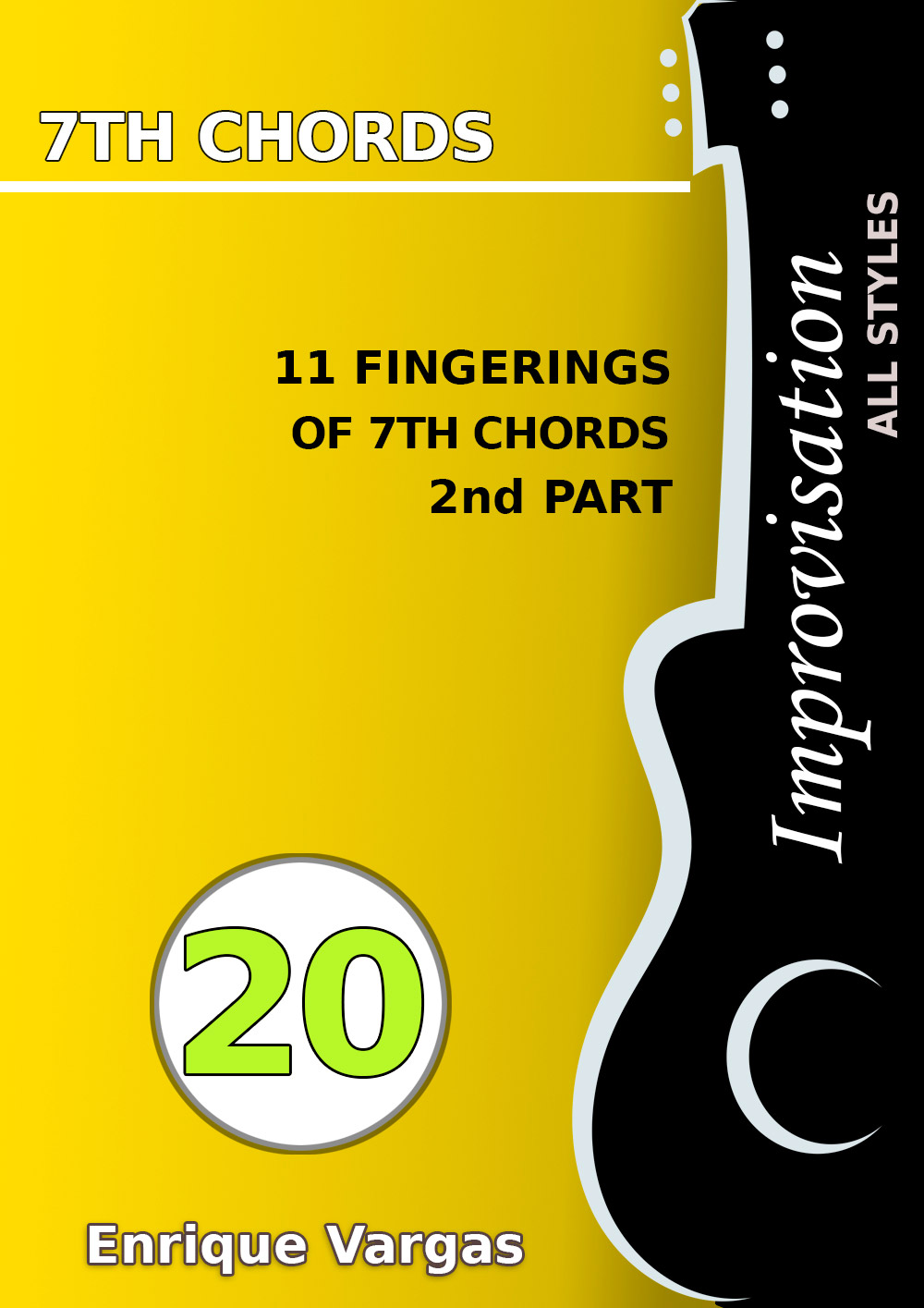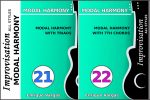Description
Lesson 20 content:
-
- 7th fingering of 7th chords
- 8th fingering of 7th chords
- 9th fingering of 7th chords
- 10th fingering of 7th chords
- 11th fingering of 7th chords
English and Spanish
GUITAR IMPROVISATION – ALL STYLES – by Enrique Vargas
Improvisation in the context of music means spontaneous creation of melodic patterns, either over predetermined or also spontaneous harmonic changes, or over rhythmical without harmony at all, like in oriental musical styles. In other words, musical improvisation means composing music on the spot.
This course in video and scores, is conducted by Enrique Vargas, presents the art of improvisation without linking it to a particular style, given that melodic patterns and their relationship with rhythm and harmony transcend stylistic idiosyncrasies. The concepts, presented in this course, can be applied to all genres of music without exception.
Various picking techniques are thoroughly analysed and explained to ensure that a student wouldn’t have speed and fluidity problems while improvising. The course is structured in ascending complexity, from the most basic to the most complicated notions of tonal and modal music. The modal theory is particularly important to understand various styles of oriental music, like Arabic, Turkish or Hindu, or mixed genres like modal jazz or flamenco.
In this complete improvisation course for guitar the following topics are presented and studied, in a structured and chronological manner:
-
- Basic picking techniques (basic only in the beginning, then, as you expand the vocabulary of musical resources, you will analyze the most advanced alternating and sweeping techniques and various tricks to develop an impressive speed).
- Basic modes and the corresponding modal harmony, the most efficient ways to organize scales and modes fingerings, both horizontal and vertical, modal permutations, and basic phrasing. In time, numerous ethnic modes will be studied, penta-, hexa-, hepta- and octotonic, from the Arabic maqam to the Hindu raga or classical Japanese pentatonic.
- The three components of melodic construction: scale, arpeggio and chromaticism; Intervals and their properties.
- Harmony and ways of constructing chords by thirds and fourths, “add” chords, etc. will be studied and analized. Several types of cadences will be presented: V – I, II – V – I, IV – V – I, backdoor cadences; direct, indirect, tritonal, tertial substitutions, various types of turnarounds, etc. Dominant scales such as superlocrian, overtone, diminished, augmented, whole-tone, among others, will be studied.
- The way to use “inside” and “outside” pentatonics, connecting them following chord progressions.
- The most advanced rhythms will be taught, using as a sophisticated learning tool Hindu Konnakol.
The video and musical text are displayed simultaneously on the screen. In the improvisation examples, the sheet music and backup tracks are provided separately so that the student can practice his/her improvisation.






Reviews
There are no reviews yet.